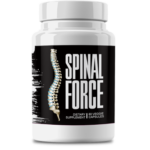This Village-Made Chinese Pain Reliever Eliminates Back And Joint Pain!
Pain in Shoulder: Top Exercises for Relief

Introduction to Pain in Shoulder
Shoulder pain can be a debilitating condition that affects your daily activities and overall quality of life. Whether caused by an injury, overuse, or an underlying medical condition, shoulder pain requires attention and proper management. In this blog post, we will explore various exercises designed to alleviate pain in the shoulder, strengthen the muscles, and improve mobility. Understanding the anatomy of the shoulder and common causes of shoulder pain is crucial for effective treatment and prevention. We will also discuss the importance of posture and lifestyle adjustments for long-term relief.
Understanding Shoulder Anatomy
The shoulder is a complex joint composed of bones, muscles, tendons, and ligaments that work together to allow a wide range of motion. The key components include the humerus (upper arm bone), scapula (shoulder blade), and clavicle (collarbone). The rotator cuff, a group of muscles and tendons, plays a crucial role in stabilizing the shoulder joint. Understanding the anatomy of the shoulder helps identify the source of pain and develop targeted exercises for relief. Proper exercise can strengthen these structures and prevent further injuries.
Common Causes of Shoulder Pain
Shoulder pain can result from various factors, including injuries, overuse, and medical conditions. Common causes include rotator cuff injuries, frozen shoulder, bursitis, tendonitis, and shoulder impingement. Arthritis and dislocations can also lead to shoulder pain. Identifying the root cause of shoulder pain is essential for effective treatment. Exercise can help alleviate pain, improve mobility, and prevent recurrence. However, it's important to consult with a healthcare professional before starting any exercise regimen, especially if you have a pre-existing condition or severe pain.
Importance of Exercise for Shoulder Pain Relief
Exercise plays a vital role in managing shoulder pain and improving overall shoulder health. Regular exercise helps strengthen the muscles surrounding the shoulder, increase flexibility, and enhance joint stability. It also promotes blood flow to the affected area, aiding in the healing process. Incorporating specific exercises into your routine can help alleviate pain, prevent further injuries, and improve your range of motion. In the following sections, we will explore various warm-up, stretching, strengthening, and mobility exercises designed to relieve pain in the shoulder.
Warm-Up Exercises for Shoulder Pain
Gentle Arm Circles
Gentle arm circles are an excellent warm-up exercise for the shoulders. Start by standing with your feet shoulder-width apart and your arms extended out to the sides. Slowly make small circles with your arms, gradually increasing the size of the circles. Perform this exercise for 30 seconds in one direction, then switch to the opposite direction. Arm circles help increase blood flow to the shoulder muscles, improve flexibility, and prepare the shoulders for more intense exercises.
Shoulder Shrugs
Shoulder shrugs are another effective warm-up exercise that targets the muscles around the shoulders and neck. Stand with your feet shoulder-width apart and your arms relaxed at your sides. Slowly lift your shoulders towards your ears, hold for a few seconds, and then lower them back down. Repeat this movement 10-15 times. Shoulder shrugs help release tension in the shoulder muscles, increase blood flow, and improve overall shoulder mobility. They are particularly beneficial for individuals who experience stiffness or tightness in the shoulders.
Pendulum Stretch
The pendulum stretch is a gentle exercise that helps relieve shoulder pain and improve range of motion. To perform this exercise, lean forward slightly and let your affected arm hang down. Use your other arm to support yourself on a stable surface. Gently swing your hanging arm in small circles, gradually increasing the size of the circles. Perform this exercise for 1-2 minutes. The pendulum stretch helps reduce stiffness, improve circulation, and promote relaxation in the shoulder muscles. It is particularly useful for individuals with frozen shoulder or limited mobility.
Stretching Exercises to Alleviate Pain in Shoulder
Cross-Body Shoulder Stretch
The cross-body shoulder stretch is a simple yet effective exercise for relieving shoulder pain and improving flexibility. Start by standing or sitting up straight. Extend one arm across your body at shoulder height. Use your opposite hand to gently pull the extended arm closer to your chest. Hold this stretch for 15-30 seconds, then switch arms. Repeat 2-3 times on each side. This stretch targets the muscles in the back of the shoulder and helps reduce tension and discomfort. Perform this stretch regularly to maintain shoulder flexibility and prevent pain.
Child's Pose Stretch
The child's pose stretch is a yoga-based exercise that helps stretch and relax the shoulder muscles. Begin by kneeling on the floor with your big toes touching and your knees spread apart. Sit back on your heels and extend your arms forward, lowering your chest towards the ground. Hold this position for 30 seconds to 1 minute, breathing deeply. The child's pose stretch helps release tension in the shoulders, back, and neck, promoting relaxation and flexibility. It is an excellent exercise for relieving shoulder pain caused by stress or poor posture.
Doorway Stretch
The doorway stretch is an effective exercise for stretching the chest and shoulder muscles. Stand in a doorway with your arms extended to the sides, elbows bent at 90 degrees. Place your forearms on the doorframe and gently lean forward until you feel a stretch in your chest and shoulders. Hold this position for 15-30 seconds, then relax. Repeat 2-3 times. The doorway stretch helps improve flexibility, reduce tightness, and alleviate pain in the shoulder muscles. It is particularly beneficial for individuals who spend long hours sitting or working at a desk.
Strengthening Exercises for Shoulder Pain Relief
Wall Push-Ups
Wall push-ups are a modified version of traditional push-ups that target the shoulder muscles without putting too much strain on them. Stand facing a wall with your feet shoulder-width apart. Place your hands on the wall at shoulder height, slightly wider than shoulder-width apart. Slowly bend your elbows and lean towards the wall, then push back to the starting position. Perform 10-15 repetitions. Wall push-ups help strengthen the shoulder muscles, improve stability, and reduce pain. They are an excellent exercise for individuals with limited upper body strength or shoulder pain.
Resistance Band Exercises
Resistance band exercises are versatile and effective for strengthening the shoulder muscles. One example is the external rotation exercise. Attach a resistance band to a stable surface at waist height. Hold the band with your affected arm, elbow bent at 90 degrees. Keeping your elbow close to your side, rotate your arm outward, then return to the starting position. Perform 10-15 repetitions. Resistance band exercises help improve shoulder strength, stability, and flexibility. They are particularly beneficial for individuals recovering from shoulder injuries or surgeries.
Dumbbell Shoulder Press
The dumbbell shoulder press is a strength-training exercise that targets the shoulder muscles. Sit or stand with your feet shoulder-width apart, holding a dumbbell in each hand at shoulder height. Press the dumbbells overhead until your arms are fully extended, then lower them back to the starting position. Perform 10-12 repetitions. The dumbbell shoulder press helps build shoulder strength, improve stability, and reduce pain. It is important to use proper form and start with a weight that you can comfortably handle to avoid injury.
Mobility Exercises for Pain in Shoulder
Towel Stretch
The towel stretch is a simple exercise that helps improve shoulder mobility and flexibility. Hold a towel with both hands behind your back, one hand holding the top and the other hand holding the bottom of the towel. Gently pull the towel upward with your top hand while simultaneously pulling it downward with your bottom hand. Hold this stretch for 15-30 seconds, then switch hands. Repeat 2-3 times. The towel stretch helps increase the range of motion, reduce stiffness, and alleviate pain in the shoulder muscles.
Finger Walk Exercise
The finger walk exercise is a gentle mobility exercise that helps improve shoulder range of motion. Stand facing a wall with your feet shoulder-width apart. Place your fingertips on the wall at waist height. Slowly "walk" your fingers up the wall as high as you can comfortably reach, then walk them back down. Perform this exercise for 1-2 minutes. The finger walk exercise helps increase shoulder mobility, reduce stiffness, and alleviate pain. It is particularly useful for individuals with limited shoulder movement due to injury or surgery.
Scapular Retraction
Scapular retraction is a simple exercise that helps improve shoulder stability and mobility. Stand or sit up straight with your arms relaxed at your sides. Squeeze your shoulder blades together, holding the position for 5-10 seconds, then relax. Repeat this movement 10-15 times. Scapular retraction helps strengthen the muscles around the shoulder blades, reduce pain, and improve posture. It is an excellent exercise for individuals who experience shoulder pain due to poor posture or muscle imbalances.
Posture Correction to Prevent Shoulder Pain
Importance of Good Posture
Maintaining good posture is essential for preventing shoulder pain and promoting overall musculoskeletal health. Poor posture, such as slouching or hunching forward, puts excessive strain on the shoulder muscles and can lead to pain and discomfort over time. Practicing good posture involves keeping your back straight, shoulders relaxed, and head aligned with your spine. Regularly performing posture-correcting exercises and being mindful of your posture throughout the day can help prevent shoulder pain and improve your overall well-being.
Desk Ergonomics
Proper desk ergonomics are crucial for preventing shoulder pain, especially for individuals who spend long hours working at a desk. Ensure that your workstation is set up to promote good posture. Your computer screen should be at eye level, and your chair should provide adequate lumbar support. Keep your feet flat on the floor and your wrists in a neutral position while typing. Taking regular breaks to stretch and move around can also help reduce the risk of shoulder pain. Implementing these ergonomic adjustments can significantly improve your comfort and productivity.
Seated Row Exercise
The seated row exercise is an effective posture-correcting exercise that targets the upper back and shoulder muscles. Sit on the floor with your legs extended and a resistance band looped around your feet. Hold the ends of the band with both hands, palms facing each other. Pull the band towards your torso, squeezing your shoulder blades together, then return to the starting position. Perform 10-15 repetitions. The seated row exercise helps strengthen the muscles that support good posture, reduce shoulder pain, and improve overall upper body strength.
Lifestyle Adjustments for Long-Term Relief from Pain in Shoulder
Proper Sleeping Positions
Proper sleeping positions can significantly impact shoulder pain and overall sleep quality. Avoid sleeping on the affected shoulder, as this can exacerbate pain and discomfort. Instead, try sleeping on your back or the opposite side, using a pillow to support your affected arm. A body pillow can also provide additional support and help maintain proper alignment. Ensuring that your mattress and pillows provide adequate support can also contribute to a more comfortable and pain-free sleep experience.
Activity Modification Tips
Modifying your daily activities can help prevent shoulder pain and reduce the risk of injury. Avoid repetitive overhead movements and heavy lifting, especially if you have a history of shoulder pain. Use proper techniques when lifting objects, keeping them close to your body and using your legs to lift. Incorporate regular breaks and stretch throughout the day to reduce muscle tension and fatigue. Being mindful of your movements and making necessary adjustments can help protect your shoulders and maintain overall musculoskeletal health.
Importance of Regular Exercise
Regular exercise is essential for maintaining shoulder health and preventing pain. Incorporating a balanced exercise routine that includes strength training, stretching, and mobility exercises can help keep your shoulder muscles strong, flexible, and pain-free. Aim for at least 150 minutes of moderate-intensity aerobic activity and two days of strength training per week. Consistency is key, so find activities you enjoy and make exercise a regular part of your lifestyle. Regular exercise not only benefits your shoulders but also contributes to overall physical and mental well-being.
Conclusion and Final Tips
When to Seek Professional Help
While exercise can be highly effective in managing shoulder pain, it is important to know when to seek professional help. If you experience severe pain, swelling, or limited range of motion that does not improve with self-care measures, consult a healthcare professional. They can provide a proper diagnosis, recommend appropriate treatments, and guide you through a personalized exercise program. Early intervention can prevent further complications and promote a faster recovery.
Maintaining a Pain-Free Shoulder
Maintaining a pain-free shoulder requires a combination of regular exercise, good posture, and mindful lifestyle choices. Incorporate the exercises and stretches discussed in this blog post into your routine to strengthen your shoulder muscles, improve flexibility, and enhance mobility. Pay attention to your posture and make ergonomic adjustments to your workspace. Modify your daily activities to reduce strain on your shoulders. By taking proactive steps, you can enjoy a pain-free shoulder and maintain overall musculoskeletal health.
Summary of Key Points
In summary, shoulder pain can significantly impact your daily life, but with the right exercises and lifestyle adjustments, you can find relief and prevent further issues. Understanding the anatomy of the shoulder and common causes of pain is essential for effective treatment. Incorporate warm-up, stretching, strengthening, and mobility exercises into your routine to alleviate pain and improve shoulder health. Pay attention to your posture and make necessary ergonomic adjustments. Lastly, seek professional help if needed and maintain a consistent exercise routine for long-term shoulder pain relief.








